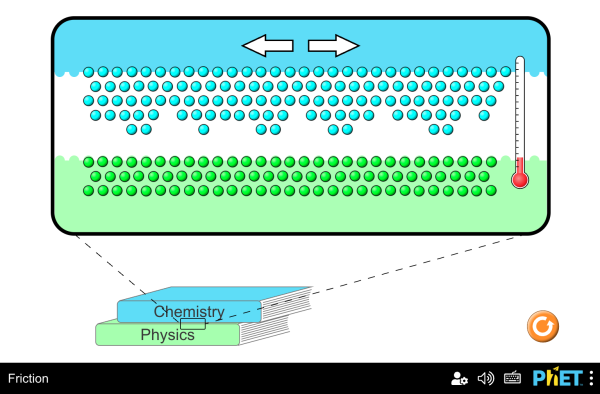- Interactive Physics Download Mediafire
- Interactive Thermodynamics 3.2
- Interactive Thermodynamics Tutorial
Sep 03, 2019 Interactive Thermodynamics (Icon431D6E3C.exe). This software package, available with the book, now includes an equation-solver coupled with thermodynamic property data retrieval. Users can obtain a single numerical solution or vary parameters to investigate their effects. Sep 03, 2019 Interactive Thermodynamics 3.2.2.1 (latest). Thermodynamics: An Interactive Approach employs a layered approach that introduces the important concepts of mass, energy, and entropy early, and progressively refines them throughout the text. To create a rich learning experience for today’s thermodynamics student, this book melds traditional content with the web-based resources and learning.
Fundamentals of Engineering Thermodynamics, 9th Edition
By Michael J. Moran, Howard N. Shapiro, Daisie D. Boettner, Margaret B. Bailey
Fundamentals of Engineering Thermodynamics by Michael J. Moran, Howard N. Shapiro, Daisie D. Boettner, and Margaret B. Bailey sets the standard for teaching students how to be effective problem solvers. Real-world applications emphasize the relevance of thermodynamics principles to some of the most critical problems and issues of today, including topics related to energy and the environment, biomedical/bioengineering, and emerging technologies.
Schedule a Demo Request Instructor Account

Videos help students build problem-solving skills.
This course includes approximately 45 video examples that walk students step-by-step through example problems and provide helpful hints about common mistakes and problem-solving method tradeoffs.
Animations help learners visualize concepts.
Several animations in each course section provide students with the ability to visualize thermodynamic processes. Each animation is broken out into several steps through which students can move at their own pace.
Interactive software enhances the learning experience.
Interactive Thermodynamics Software (IT) is a valuable learning tool that allows students to develop engineering models, perform “what-if” analyses, and examine principles in more detail. Brief IT tutorials are included within the course and the use of IT is illustrated with selected solved examples.
- Check Your Understanding Questions: The course includes approximately 700 Check Your Understanding questions.
- Student Practice Modules: Practice Modules contain about 100 Check Your Understanding questions and 100 automatically-graded problems with the ability to check work against official step-by-step solutions in text or video format.
- QuickStart Assignments: Each course section includes QuickStart Assignments that make course set-up a snap.
- Algorithmically-Generated Homework Problems: Approximately 600 algorithmically-generated homework problems provide immediate feedback to students.
What’s New
Interactive Physics Download Mediafire
DR. MICHAEL J. MORAN is Professor of Mechanical Engineering at Ohio State University. He is a specialist in engineering thermodynamics and thermoeconomics. He also works in the area of thermal design and optimization.
HOWARD N. SHAPIRO is Professor of Mechanical Engineering at Iowa State University. His academic interests include energy efficiency, waste reduction, and productivity in industrial processes; thermodynamics and energy conversion; refrigeration, heating, ventilating, and air conditioning.
DAISIE D. BOETTNER, Brigadier General, U.S. Army Retired, is Professor Emerita, United States Military Academy, West Point, NY.
Interactive Thermodynamics 3.2
MARGARET B. BAILEY is Senior Faculty Associate to the Provost for ADVANCE, PI and Professor of Mechanical Engineering at Rochester Institute of Technology. Dr. Bailey conducts research in thermodynamic analyses of complex, energy intensive systems. Bailey is also involved with Engineering Education-related research serving as a co-PI on two projects. Dr. Bailey was instrumental in creating and served as the Founding Executive Director (2003–2011) of the nationally recognized women in engineering program called WE@RIT which is dedicated to expanding the representation of women engineers and women leaders within the engineering profession.

Interactive Thermodynamics Tutorial
- Getting Started: Introductory Concepts and Definitions
- Energy and the First Law of Thermodynamics
- Evaluating Properties
- Control Volume Analysis Using Energy
- The Second Law of Thermodynamics
- Using Entropy
- Exergy Analysis
- Vapor Power Systems
- Gas Power Systems
- Refrigeration and Heat Pump Systems
- Thermodynamic Relations
- Ideal Gas Mixture and Psychrometric Applications
- Reacting Mixtures and Combustion
- Chemical and Phase Equilibrium